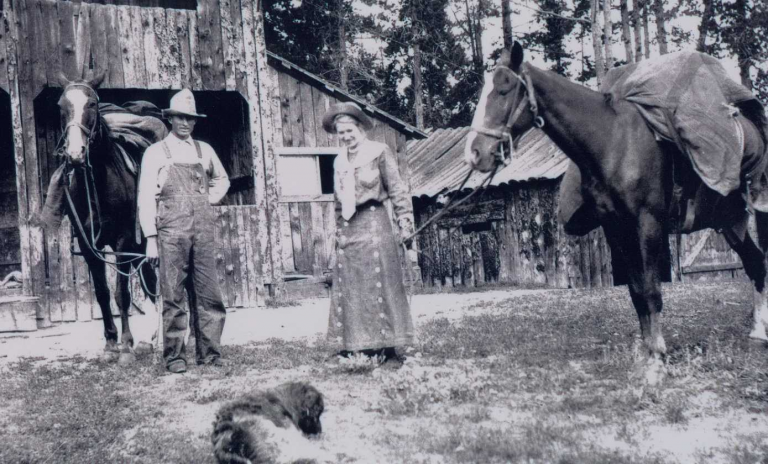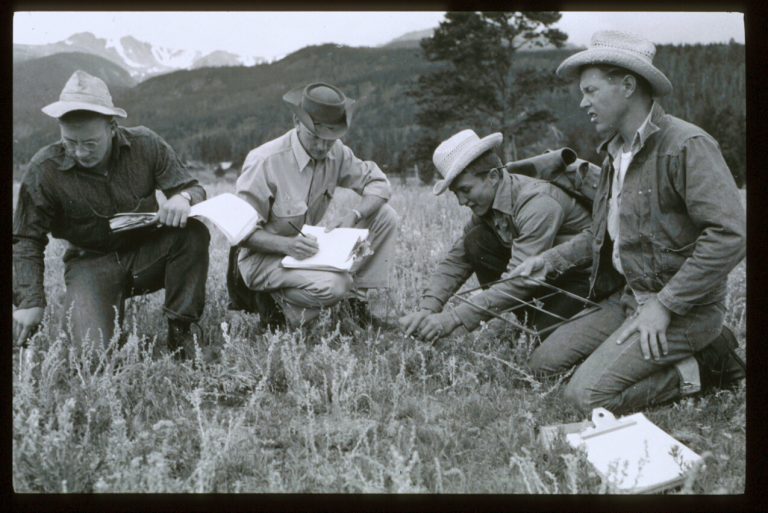Early History of the Valley
The original inhabitants of the valley were Native Americans from the Arapaho, Mountain Ute, and Cheyenne tribes. White settlers, primarily fur trappers, began to arrive in the 1830’s followed by gold prospectors in the 1850’s and homesteaders in the 1890’s and beyond.
In 1864, after being involved in the Sand Creek Massacre, George Pingree left the military and traveled to Northern Colorado in search of trees to log for railroad ties for the transcontinental railroad. By 1868 he established a tie camp in the valley that would take his name (a USGS designation). Tie hacks worked during three seasons cutting and piling ties along the banks of the South Fork of the Cache la Poudre River. The ties were then floated down river to a point near Laporte, Colorado, where they were hauled by oxen-pulled wagons to Tie Siding, Wyoming. By fall of 1870, the local demand for railroad ties had been filled, and the tie camp closed.
Koenig/Ramsey Ranch Historic District
In the late 1890s, brothers Hugh and Charles Ramsey each established a homestead ranch and made lives for themselves in the valley. Frank Koenig, a Ramsey family friend, courted Hugh’s daughter, Hazel, and the two were married in 1913. The couple raised their family in the valley while maintaining a working homestead ranch.

The Koenig property was sold to Colorado State University in 1972. Restoration projects, funded by grants from the Colorado Historical Society, have helped to preserve many of the original buildings on the homestead property as an illustration of life in pioneer times. The Homestead cabin now houses the Mountain Campus Museum.
Mountain Campus History
A 1912 act of Congress paved the way for the Colorado Agricultural College (now Colorado State University) to select land in Roosevelt National Forest to establish a mountain campus as a site for biologic research and field study. In 1914, CAC President Charles E. Lory and Colorado Governor E.M. Ammons selected the 1,600-acre parcel that comprises the present–day Mountain Campus.

The first academic course was held in 1915. Two years later, in 1917, the first forestry field camp was held. Official designation as a campus of Colorado State was granted in the 1960s. The CSU Mountain Campus continues to offer field courses in forestry and natural resources and is now home to over 300 students each summer from the Warner College of Natural Resources and other colleges within CSU.
Same Great Valley, New Era
In 2015, the campus (formerly named Pingree Park Mountain Campus) was officially renamed Colorado State University Mountain Campus. The new name aligns the field education and research campus more closely with CSU’s mission as a land-grant institution and removed association with the person of George Pingree, who played a self-proclaimed role in the Sand Creek Massacre. Despite the surrounding valley still bearing the USGS designation of “Pingree Park”, now the CSU Mountain Campus itself, and the affection many visitors develop for the place, can better reflect CSU’s Principles of Community.